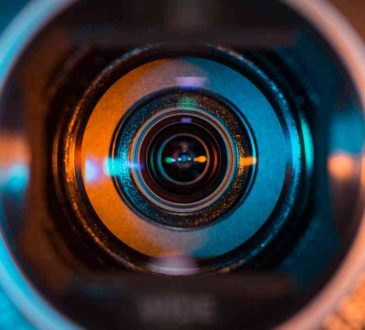New World Security Solutions – Where Data and Intelligence Collide

Security is often viewed as a necessary cost of business. The security professionals working for organizations have innovative ideas, and with the right technology, they can provide immense value above and beyond preventing theft.
Every security department is collecting massive amounts of information and data from its various systems daily, that can be leveraged for purposes beyond security. This new world of security solutions, where data and intelligence collide, will change the future of security and business.
In addition to securing data, traditional physical security is critical for organizations. Physical security measures are designed to deny unauthorized access to facilities and protect personnel, resources and property from damage, theft or harm. The requirement for physical and cybersecurity measures is increasing, and both are critical for organizations. By partnering with a security department to analyze the data collected by the various systems at work, organizations can learn more about their business processes, customers and employees.
What type of data do these systems collect?
Security teams manage several different types of physical and logical systems. While physical systems may include video surveillance, access control, perimeter intrusion, fire protection, incident management systems, and/or security guards, cyber security systems feature critical infrastructure security, application security, network security, cloud security, and/or Internet of Things (IoT) security. With the overlap and interconnectivity of these departments and systems, the trend is to converge physical and logical security under one leader.
Video surveillance systems, which feature physical and cyber solutions, can identify people and objects with incredible accuracy. Today, standard video systems can perform motion detection, people counting, and gun detection, providing accurate data and readings on images the system records. In response to the COVID-19 pandemic, some video systems can perform face mask detection or social distancing tracking. They can even distinguish between males and females and pick out ‘persons of interest’ in a crowd.
Like viewing and recording potential security threats, access control systems regulate entry points at facilities by requiring identifying credentials to enter a facility. Examples of credentials include fobs and key card entry systems, encrypted badges, mobile credentials, PIN codes, and passwords. Personal credentials tell the system who is trying to gain entry, the time they attempted to enter, and how long they were there.
As these systems, like access control and video surveillance, collect these data points, they are unusable in their purest form, which is why machine learning tools are required to make the data useful. Machine learning, a part of artificial intelligence, tells a system how to filter these massive amounts of data. Using sample data, machine learning algorithms build a model to make predictions or decisions based on the data interpretation. Without this technology, companies have massive amounts of data without any intelligence to gain from it.
How should the rest of the company leverage this data?
The data harnessed from the digital security infrastructure can provide value to other parts of the organization, such as human resources, facilities, marketing and operations, in order to improve overall company processes and streamline inefficiencies. Some examples include:
-
- Human Resources: Given that access control systems capture data on who is in the facility, at what time of day, and for how long, Human Resources can be equipped with critical data in times of crisis. In addition, credentials can be turned off when an employee is terminated from the organization, preventing unauthorized access and minimizing the potential for corporate espionage. Similarly, analytics from the access control system can be used to spot unusual employee behavior, such as attendance in the office during atypical hours.
- Facilities: Security systems can measure foot traffic throughout company facilities showing where and when employees congregate. Tracking foot traffic equips companies with more data to inform the decisions such as real estate or utility needs and allows management to schedule staff accordingly, based on the data provided by the security team.
- Marketing: In retail, the data from security systems can determine product placement, based on where people congregate, where their eyes point, and how long they tend to dwell in one place. Advanced video systems can even tell retailers what mood an individual was in when looking at a product and provide further insights into the customer journey throughout the store.
- Operations: Data from security systems is critical to managing health and life safety. For example, in a chemical factory, some physical security systems will gather data on air quality to ensure the health and safety of employees and the chemicals. By aligning security data with intelligence, the operations team can proactively program the system to unlock the doors, turn on the sprinkler system and call emergency services all within a fraction of a second based on the data the system is reporting. In addition to safety, video analytics can also help optimize production flow and bottlenecks in a warehouse, ensuring optimum production and therefore company performance.
What are the ethical responsibilities when leveraging data from security systems?
There are numerous ethical issues when collecting data from security systems. These may include responsible decision-making, confidentiality, privacy, piracy, fraud and misuse, liability, copyright and trade secrets. Even with respect to employees, the rules governing data collection vary from country to country and state to state.
There is a long list of how security system data could possibly be used for nefarious purposes. Bad actors could use the data to racially profile. Age and gender groups could be targeted with biometric data. Many companies are hiring Chief Compliance Officers – or more recently, Chief Ethics Officers – to help determine what data should be collected and how it should be used. Data and analytics are not inherently bad, but it is important to put boundaries around a company’s data strategy. If subcontracted companies outsource their data collection to a third party, they must ensure that they follow ethical guidelines comparable to your standards.
Information is power, and sharing data from organizational security systems is a powerful force multiplier. Leveraging data and intelligence within additional departments of the business will make companies more efficient, saving time and money, and making them more competitive in your industry.
Written by Mike Dunn.
Have you read?
Best Business Schools In The World For 2022.
Best Fashion Schools In The World For 2022.
Best Hospitality And Hotel Management Schools In The World For 2022.
Best Medical Schools In The World For 2022.








